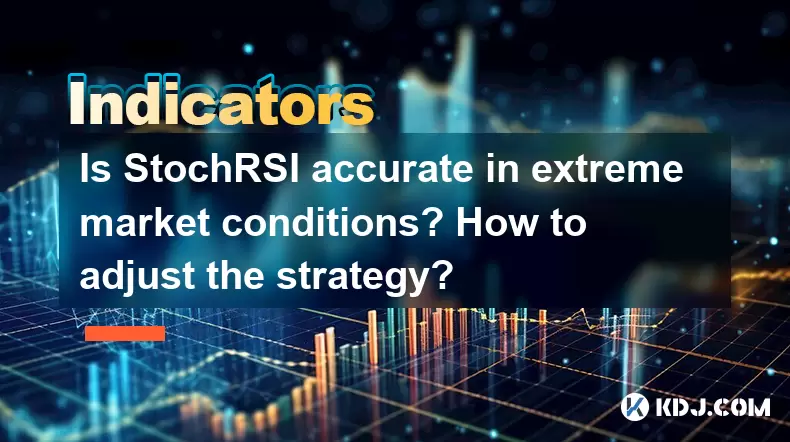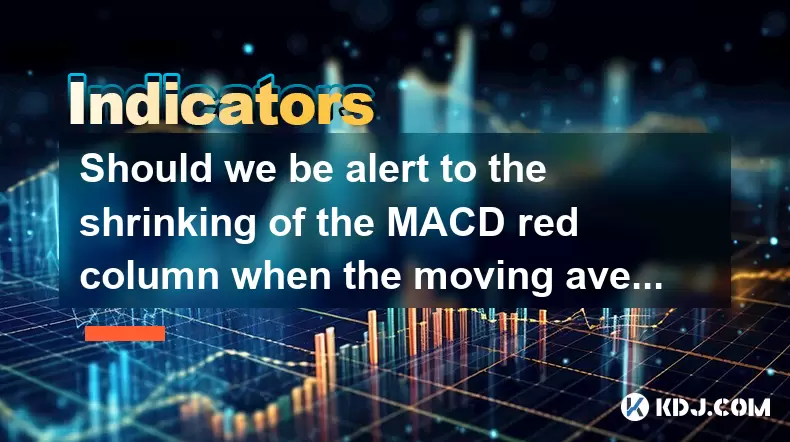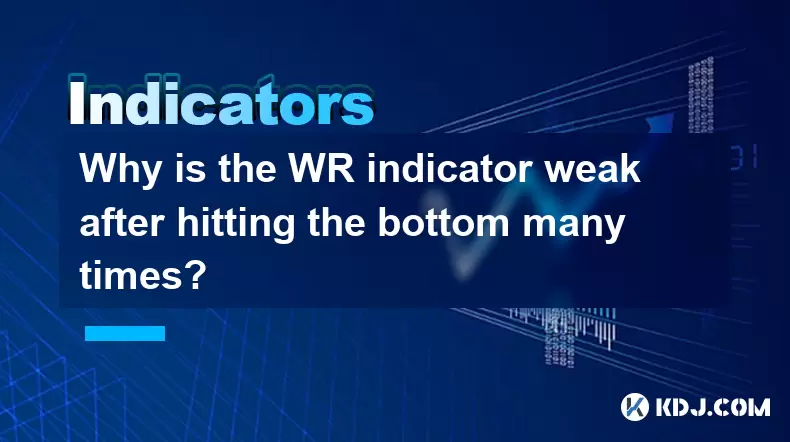-
 Bitcoin
Bitcoin $101,898.5005
-0.75% -
 Ethereum
Ethereum $2,258.1125
-1.07% -
 Tether USDt
Tether USDt $1.0004
0.01% -
 XRP
XRP $2.0178
-2.93% -
 BNB
BNB $624.0243
-1.53% -
 Solana
Solana $134.3298
-0.90% -
 USDC
USDC $0.9999
0.01% -
 TRON
TRON $0.2675
-2.05% -
 Dogecoin
Dogecoin $0.1538
-1.96% -
 Cardano
Cardano $0.5482
-1.11% -
 Hyperliquid
Hyperliquid $35.5636
5.45% -
 Bitcoin Cash
Bitcoin Cash $453.4902
-1.66% -
 Sui
Sui $2.5134
-2.97% -
 UNUS SED LEO
UNUS SED LEO $9.1292
1.77% -
 Chainlink
Chainlink $11.8457
-1.60% -
 Stellar
Stellar $0.2312
-2.73% -
 Avalanche
Avalanche $16.9721
0.29% -
 Toncoin
Toncoin $2.7549
-3.82% -
 Shiba Inu
Shiba Inu $0.0...01081
-1.10% -
 Litecoin
Litecoin $80.8250
-0.71% -
 Hedera
Hedera $0.1374
0.21% -
 Monero
Monero $305.4827
-2.36% -
 Ethena USDe
Ethena USDe $1.0006
0.00% -
 Dai
Dai $1.0000
-0.01% -
 Polkadot
Polkadot $3.2085
-3.12% -
 Bitget Token
Bitget Token $4.0845
-3.13% -
 Uniswap
Uniswap $6.3353
-1.63% -
 Pi
Pi $0.5085
-0.70% -
 Pepe
Pepe $0.0...08913
-3.82% -
 Aave
Aave $232.7090
-0.58%
Is StochRSI accurate in extreme market conditions? How to adjust the strategy?
StochRSI, combining Stochastic Oscillator and RSI, helps identify overbought/oversold crypto market conditions; adjust settings for extreme volatility to enhance accuracy.
May 23, 2025 at 05:08 pm

Understanding StochRSI and Its Application in Cryptocurrency Trading
The Stochastic Relative Strength Index (StochRSI) is a technical indicator that combines the concepts of the Stochastic Oscillator and the Relative Strength Index (RSI). It is designed to identify overbought and oversold conditions in the market, making it a popular tool among cryptocurrency traders. However, its accuracy in extreme market conditions is a topic of significant interest and debate.
The Mechanics of StochRSI
StochRSI is calculated by applying the Stochastic Oscillator formula to the RSI values rather than price values. The formula for StochRSI is as follows:
[ \text{StochRSI} = \frac{\text{RSI} - \text{Lowest Low RSI}}{\text{Highest High RSI} - \text{Lowest Low RSI}} ]
Where:
- RSI is the current RSI value.
- Lowest Low RSI is the lowest RSI value over a specified period.
- Highest High RSI is the highest RSI value over the same period.
The resulting value ranges between 0 and 1, which is often scaled to 0 to 100 for easier interpretation. A reading above 0.8 (or 80) typically indicates an overbought condition, while a reading below 0.2 (or 20) suggests an oversold condition.
StochRSI in Extreme Market Conditions
Extreme market conditions, such as those seen during significant bull or bear runs, can challenge the effectiveness of many technical indicators, including StochRSI. In these conditions, the StochRSI may generate more false signals due to the heightened volatility and rapid price movements.
For instance, during a strong bullish trend, the market may remain in an overbought state for an extended period, causing the StochRSI to stay above 80 without a subsequent price correction. Similarly, in a prolonged bearish trend, the StochRSI might remain below 20, indicating oversold conditions that do not lead to an immediate rebound.
Adjusting StochRSI Strategy for Extreme Conditions
To enhance the accuracy of StochRSI in extreme market conditions, traders can implement several adjustments to their strategy:
Increase the Period Length: Using a longer period for calculating StochRSI can help filter out short-term noise and provide more reliable signals. For instance, instead of the default 14-period setting, traders might consider using a 21 or 28-period setting.
Combine with Other Indicators: Using StochRSI in conjunction with other indicators can help confirm signals and reduce false positives. Popular combinations include the Moving Average Convergence Divergence (MACD), Bollinger Bands, or even the standard RSI.
Implement a Trend Filter: Incorporating a trend filter, such as a simple moving average (SMA) or an exponential moving average (EMA), can help traders determine the overall market direction. For example, only taking buy signals when the price is above the SMA can increase the likelihood of successful trades.
Adjust Overbought/Oversold Thresholds: In extreme conditions, traders might need to adjust the traditional overbought and oversold thresholds. For instance, setting the overbought threshold at 85 and the oversold threshold at 15 could provide more accurate signals during volatile periods.
Practical Application of Adjusted StochRSI Strategy
Here's a step-by-step guide on how to adjust and apply the StochRSI strategy in extreme market conditions:
Select a Trading Platform: Choose a reliable cryptocurrency trading platform that supports technical analysis tools, such as TradingView or Binance.
Set Up StochRSI Indicator: Add the StochRSI indicator to your chart. Most platforms allow you to customize the period length. Set it to a longer period, such as 21 or 28 days.
Add a Trend Filter: Include a simple moving average (SMA) on your chart. A common setting is the 50-day SMA, which helps identify the overall trend.
Adjust Overbought/Oversold Thresholds: Modify the StochRSI settings to use 85 as the overbought threshold and 15 as the oversold threshold.
Monitor Other Indicators: Add additional indicators like MACD or Bollinger Bands to confirm StochRSI signals.
Trade Based on Signals: Only take buy signals when the StochRSI is below 15 and the price is above the 50-day SMA. Conversely, only take sell signals when the StochRSI is above 85 and the price is below the 50-day SMA.
Real-World Examples of StochRSI in Extreme Conditions
To illustrate the effectiveness of the adjusted StochRSI strategy, let's consider a few real-world examples from the cryptocurrency market:
Bitcoin Bull Run of 2021: During the significant bull run in early 2021, Bitcoin's price soared, often staying in overbought territory according to the standard StochRSI settings. By adjusting the period length to 28 days and the overbought threshold to 85, traders could have avoided premature sell signals and capitalized on the extended uptrend.
Crypto Market Crash of 2022: In the bear market of 2022, many cryptocurrencies experienced prolonged oversold conditions. By using a 21-day StochRSI setting and an oversold threshold of 15, traders could have identified more reliable buy signals, potentially entering the market at lower prices before any subsequent rebounds.
Frequently Asked Questions
Q: Can StochRSI be used for all cryptocurrencies, or is it more effective for certain types?
A: StochRSI can be applied to any cryptocurrency, but its effectiveness can vary based on the specific asset's volatility and trading volume. Generally, it tends to work better on more liquid and widely traded cryptocurrencies like Bitcoin and Ethereum, as these assets have more reliable price data and less susceptibility to manipulation.
Q: How often should I check the StochRSI indicator for trading signals?
A: The frequency of checking the StochRSI depends on your trading strategy. For day traders, checking every few hours or even more frequently might be necessary. For swing traders, checking daily or even weekly could be sufficient. It's important to align the frequency with your trading timeframe and risk tolerance.
Q: Are there any specific timeframes that work better with the adjusted StochRSI strategy?
A: The effectiveness of the adjusted StochRSI strategy can vary across different timeframes. For short-term trading, such as day trading, using a 1-hour or 4-hour chart might provide more actionable signals. For longer-term trading, such as swing trading, a daily or weekly chart could be more appropriate. Experimenting with different timeframes can help identify which works best for your trading style.
Q: Can StochRSI be used in conjunction with automated trading bots?
A: Yes, StochRSI can be integrated into automated trading bots. Many trading platforms and bot software allow users to set up custom indicators and strategies. By programming the adjusted StochRSI settings into the bot, traders can automate their trading decisions based on the strategy outlined above. However, it's crucial to backtest the strategy thoroughly before deploying it in live markets.
Disclaimer:info@kdj.com
The information provided is not trading advice. kdj.com does not assume any responsibility for any investments made based on the information provided in this article. Cryptocurrencies are highly volatile and it is highly recommended that you invest with caution after thorough research!
If you believe that the content used on this website infringes your copyright, please contact us immediately (info@kdj.com) and we will delete it promptly.
- DOGE Recovery Amid US-Iran Tensions: A Market Rollercoaster
- 2025-06-23 20:45:13
- Fiserv, PayPal, and Stablecoins: A New Era of Interoperability?
- 2025-06-23 20:45:13
- Hacken Token's Wild Ride: Minting Exploit and the Cryptocurrency Crash
- 2025-06-23 21:05:12
- Dogecoin, Cloud Mining, and Blockchain: A Meme's Evolution
- 2025-06-23 21:25:12
- Layer 1 Turmoil: CEO Ousted Amidst Scam Allegations
- 2025-06-23 21:05:12
- Solana's Stumble: Price Crash and Network Exodus?
- 2025-06-23 21:25:12
Related knowledge

What is the significance of the gap formed by the gap opening not being filled within five days?
Jun 23,2025 at 09:42pm
Understanding Gaps in Cryptocurrency TradingIn the world of cryptocurrency trading, a gap refers to a situation where the price of an asset jumps from one level to another without any trading activity occurring between those two levels. This often happens over weekends or holidays when the market is closed, and significant news or events occur that impa...

Does the second golden cross of MACD above the zero axis represent the continuation of strength?
Jun 23,2025 at 08:21pm
Understanding the MACD IndicatorThe Moving Average Convergence Divergence (MACD) is a widely used technical analysis tool in cryptocurrency trading. It consists of three main components: the MACD line, the signal line, and the histogram. The MACD line is calculated by subtracting the 26-period Exponential Moving Average (EMA) from the 12-period EMA. The...

Is it effective when the DIF line suddenly crosses the zero axis when the volume is shrinking and the market is trading sideways?
Jun 23,2025 at 07:29pm
Understanding the DIF Line in Technical AnalysisThe DIF line, or the Difference Line, is a critical component of the MACD (Moving Average Convergence Divergence) indicator, widely used in technical analysis across cryptocurrency and traditional financial markets. It represents the difference between the 12-period EMA (Exponential Moving Average) and the...

Should we be alert to the shrinking of the MACD red column when the moving average is arranged in a bullish pattern?
Jun 23,2025 at 08:14pm
Understanding the MACD Red Column and Its SignificanceThe Moving Average Convergence Divergence (MACD) is a widely used technical indicator in cryptocurrency trading. It consists of three main components: the MACD line, the signal line, and the MACD histogram (the red column). The red column represents the difference between the MACD line and the signal...

Why is the WR indicator weak after hitting the bottom many times?
Jun 23,2025 at 07:56pm
Understanding the WR Indicator in Cryptocurrency TradingThe Williams %R (WR) indicator is a momentum oscillator used by traders to identify overbought and oversold levels in the market. It ranges from 0 to -100, with readings above -20 considered overbought and below -80 considered oversold. In the context of cryptocurrency trading, where volatility is ...

Is the shrinking cross star after the historical high a signal of topping?
Jun 23,2025 at 05:56pm
Understanding the Shrinking Cross Star PatternIn technical analysis, candlestick patterns are essential tools for traders to predict potential price movements. One such pattern is the shrinking cross star, which appears as a small-bodied candle with long upper and lower shadows, indicating indecision in the market. When this pattern forms after an asset...

What is the significance of the gap formed by the gap opening not being filled within five days?
Jun 23,2025 at 09:42pm
Understanding Gaps in Cryptocurrency TradingIn the world of cryptocurrency trading, a gap refers to a situation where the price of an asset jumps from one level to another without any trading activity occurring between those two levels. This often happens over weekends or holidays when the market is closed, and significant news or events occur that impa...

Does the second golden cross of MACD above the zero axis represent the continuation of strength?
Jun 23,2025 at 08:21pm
Understanding the MACD IndicatorThe Moving Average Convergence Divergence (MACD) is a widely used technical analysis tool in cryptocurrency trading. It consists of three main components: the MACD line, the signal line, and the histogram. The MACD line is calculated by subtracting the 26-period Exponential Moving Average (EMA) from the 12-period EMA. The...

Is it effective when the DIF line suddenly crosses the zero axis when the volume is shrinking and the market is trading sideways?
Jun 23,2025 at 07:29pm
Understanding the DIF Line in Technical AnalysisThe DIF line, or the Difference Line, is a critical component of the MACD (Moving Average Convergence Divergence) indicator, widely used in technical analysis across cryptocurrency and traditional financial markets. It represents the difference between the 12-period EMA (Exponential Moving Average) and the...

Should we be alert to the shrinking of the MACD red column when the moving average is arranged in a bullish pattern?
Jun 23,2025 at 08:14pm
Understanding the MACD Red Column and Its SignificanceThe Moving Average Convergence Divergence (MACD) is a widely used technical indicator in cryptocurrency trading. It consists of three main components: the MACD line, the signal line, and the MACD histogram (the red column). The red column represents the difference between the MACD line and the signal...

Why is the WR indicator weak after hitting the bottom many times?
Jun 23,2025 at 07:56pm
Understanding the WR Indicator in Cryptocurrency TradingThe Williams %R (WR) indicator is a momentum oscillator used by traders to identify overbought and oversold levels in the market. It ranges from 0 to -100, with readings above -20 considered overbought and below -80 considered oversold. In the context of cryptocurrency trading, where volatility is ...

Is the shrinking cross star after the historical high a signal of topping?
Jun 23,2025 at 05:56pm
Understanding the Shrinking Cross Star PatternIn technical analysis, candlestick patterns are essential tools for traders to predict potential price movements. One such pattern is the shrinking cross star, which appears as a small-bodied candle with long upper and lower shadows, indicating indecision in the market. When this pattern forms after an asset...
See all articles
























































































